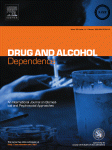
Drug addiction research requires but lacks a valid and reliable way to measure both the risk (propensity) to develop addiction and the severity of manifest addiction.
This paper argues for a new measurement approach and instrument to quantify propensity to and severity of addiction, based on the testable assumption that these constructs can be mapped onto the same dimension of liability to addiction.
The case for this new direction becomes clear from a critical review of empirical data and the current instrumentation. The many assessment instruments in use today have proven utility, reliability, and validity, but they are of limited use for evaluating individual differences in propensity and severity.
The conceptual and methodological shortcomings of instruments currently used in research and clinical practice can be overcome through the use of new technologies to develop a reliable, valid, and standardized assessment instrument(s) to measure and distinguish individual variations in expression of the underlying latent trait(s) that comprises propensity to and severity of drug addiction.
Such instrumentation would enhance our capacity for drug addiction research on linkages and interactions among familial, genetic, psychosocial, and neurobiological factors associated with variations in propensity and severity.
It would lead to new opportunities in substance abuse prevention, treatment, and services research, as well as in interventions and implementation science for drug addiction.
Request Reprint E-Mail: kconway@nida.nih.gov